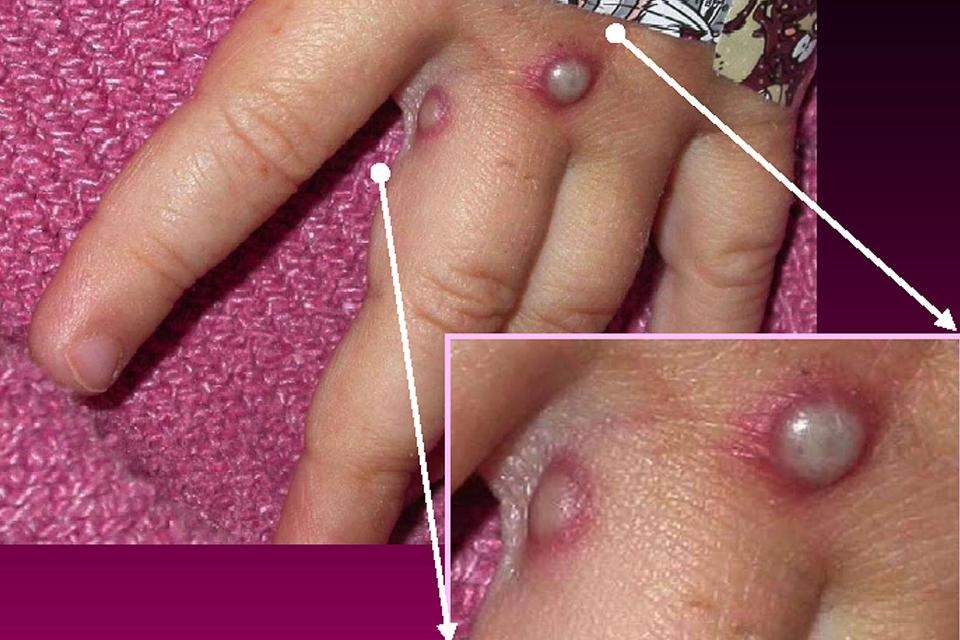CDC Issues New Guidance on Monkeypox Symptoms as Cases Rise in the United States

Getty Monkeypox
As U.S. cases continue to rise, the Centers for Disease Control and Prevention has released new guidance for monkeypox. On Tuesday, the national public health agency detailed how to identify the rare virus based on symptoms from newly reported cases.
Previously, the first signs of monkeypox were fever, headache, muscle aches, chills and exhaustion. Around one to three days after those first symptoms, infected people develop a rash, typically on the face, that then spreads to other parts of the body.
Now, the CDC says most patients will first show signs of a rash — typically on the mouth or "genital or perianal area" — which will turn into fluid-filled blisters. In recent patients, these lesions appear in the same area of the body compared to previous patients that saw lesions scattered around the body.
Additionally, many new patients are not experiencing past symptoms like fever, headache, muscle aches, chills and exhaustion at all. Newly reported symptoms include anorectal pain, rectal bleeding, and tenesmus — feeling the need to pass stools, even though the bowels are empty.
Never miss a story — sign up for PEOPLE's free daily newsletter to stay up-to-date on the best of what PEOPLE has to offer, from juicy celebrity news to compelling human interest stories.

Courtesy of CDC/Getty Images Monkeypox lesions
The new guidance comes just as the World Health Organization announced Tuesday that they would be renaming the virus.
"WHO is also working with partners and experts from around the world on changing the name of monkeypox virus, its clades and the disease it causes," WHO Director-General Tedros Adhanom Ghebreyesus said in a briefing. The current name doesn't follow the organizations guidelines that recommend avoiding geographic regions and animal names, another spokesperson said.
In a letter published June 10, more than 30 scientists from around the world called for the name change, writing that while the origin of the current monkeypox outbreak is still unknown, there is an inaccurate narrative linking all cases to Africa.
"In the context of the current global outbreak, continued reference to, and nomenclature of this virus being African is not only inaccurate but is also discriminatory and stigmatizing," the letter states.
Monkeypox was named because it was first identified in 1958 in colonies of monkeys. The first human case of the virus was found in 1970 in the Democratic Republic of the Congo, according to the CDC.
Cases have mostly been concentrated in the Congo — which typically sees thousands of monkeypox infections a year — and Nigeria, where there have been more than 200 suspected and 500 reported cases since 2017, according to WHO. In the Congo, around 1 in 10 people who contract monkeypox die, but that is not the case in the U.S., where no one has ever died due to the virus.
Monkeypox can spread through a few methods. While direct contact with body fluids or body blisters can lead to transmission, the main way is through respiratory droplets. Monkeypox does not spread as easily as Covid-19. Someone would have to be in prolonged contact with an infected person to contract monkeypox.
According to the CDC, as of June 15, there have been 84 confirmed cases of the virus in the U.S. this year. This isn't the first time the U.S. has seen cases of monkeypox. In 2003 there was an outbreak with 47 cases, according to the CDC.

